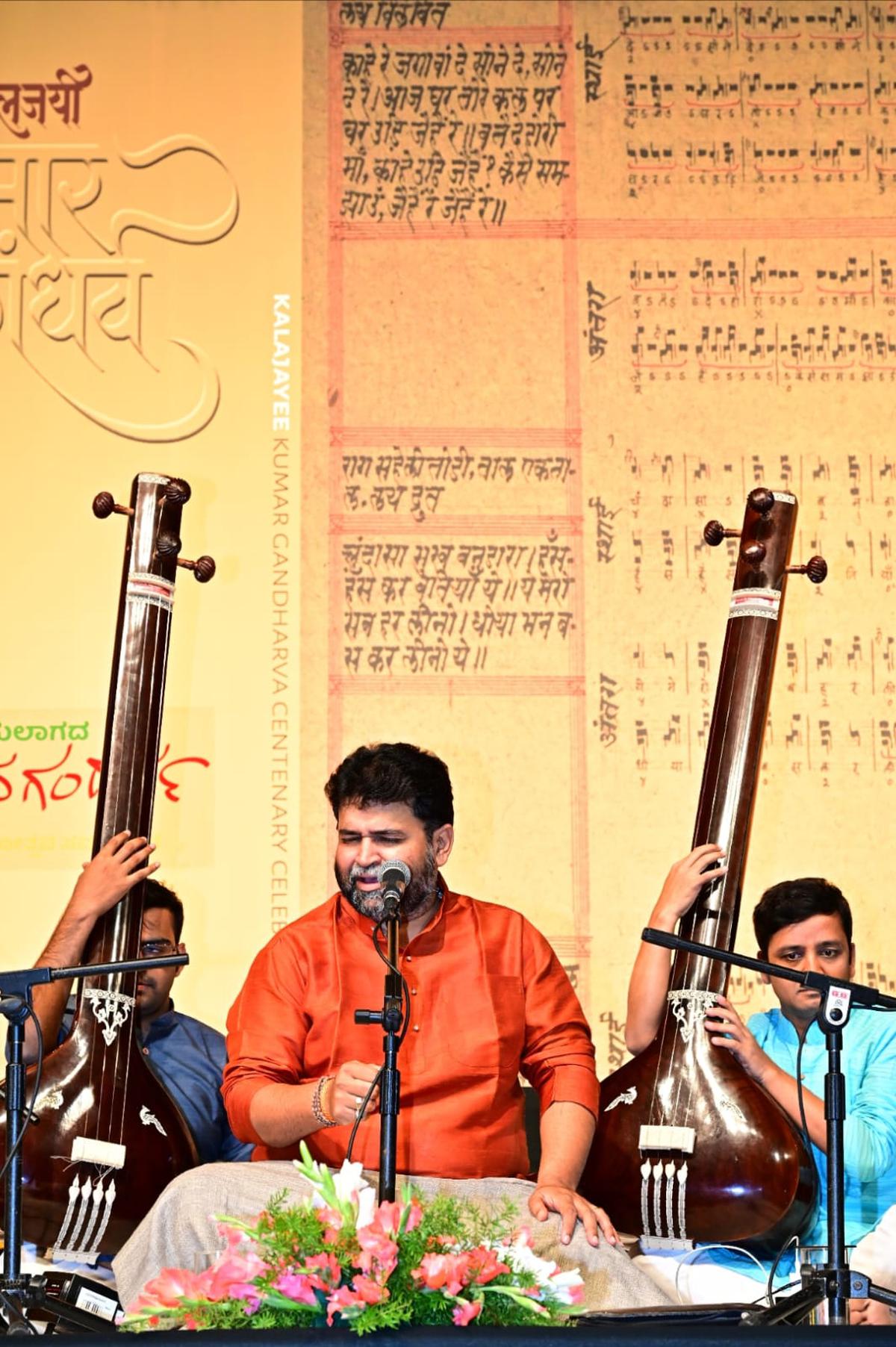Bhuvanesh komkali performing at Kaljayi in Bengaluru
| Photo Credit: Vaishali K.S.
An experimentalist par excellence, a voyager into the strange seas of sound, an exploiter of the expressive power of music — Pt Kumar Gandharva was all this and more. The Kumar Gandharva Pratishthan in association with the Indira Gandhi National Centre for Arts and ground support from ‘Saptak’ had organised ‘Kaljayi’, a two-day music festival at Ravindra Kalakshetra in Bengaluru, a music series to celebrate the legendary vocalist’s birth centenary with ground support from ‘Saptak’ Bengaluru. The event opened with a concert by Bhuvanesh Komkali, the grandson of Pt Kumar Gandharva and the son of Pt Mukul Shivputra.
Bhuvanesh began his concert with the ‘sandhi parakash’ raag Multani, ushering in the sombre beauty of the eventide. He set the tone with energetic improvisation of the popular vilambit khayal bandish, ‘Gokul gaav ki chora’. He seemed to be totally in sync with Kumar ji’s ‘decentred’ approach, which is more about mood creation rather than the incremental progression discernible in the building of a melodic edifice. Bhuvanesh’s unique style of voice production with unmistakable creative variations in the raag and bandish enthralled the audience. It was an aesthetic presentation where he attempted to extract the poetic intensity of the bandish to the fullest. Bhuvanesh’s remarkable ‘raagvistar’ Multani was matched by empathetic accompaniment on the samvadini by Pt Vyasmurthy Katti.
In the brisk drut teen taal bandish ‘Dil bekarar’, Bhuvanesh executed an impressive blend of verbal enunciation and melodic exploration. Pt Ravindra Yawagal on the tabla enhanced the appeal of the cascading taans with his mesmerising flourishes.

Bhuvanesh Komkali
| Photo Credit:
Vaishali K.S.
After Multani , Bhuvanesh Komkali presented the Roopak taal bandish ‘Mara rasiya’ in raag Shyam Kalyan, providing fascinating glimpses of some uncommon, and relatively unexplored melodic passages. His rendition of the drut teen khayal ‘Sawan ki saanj moko sukhad bhayi’ showed how originality, s and verve lend an ethereal dimension to his music.
During a brief conversation after the concert, Bhuvanesh elaborated on the title ‘Kaljayi’. “The musical legacy of Kumarji transcends time. Musicians today are fascinated by his unique approach, which helped him discover colourful possibilities of the raags. We are still trying to comprehend the manner in which he bypassed the traditional unfolding of the raag to focus on its melodic centre. He is undoubtedly a ‘Kaljayi’, one who has vanquished the relentlessness of time that erases everything,” says Bhuvanesh.
You are the inheritor of an enviable legacy, the inimitable gayaki of Pt Kumar Gandharva. What kind of pressures or expectations does it bring with it?
“It is exhilarating and unnerving at the same time. I am aware of the expectations and the need to constantly re-invent my music . It can be rigorous and inexorable. I have my limitations and I try my best. Nevertheless , to be the torchbearer of a formidable legacy can be a tremendous responsibility.”
Lastly, how do you think this art, which needs to be enriched and sustained through the guru-sishya parampara, stand in a didigtally-driven world?
“There are some very earnest students, who sincerely train. I also teach online. However, personal interaction with the guru cannot be supplanted by anything else,” says Bhuvanesh Komkali.